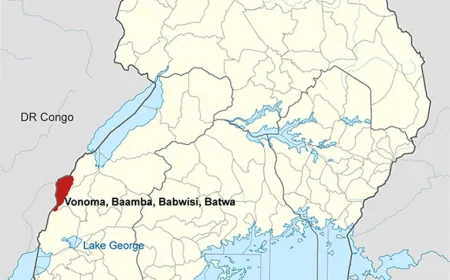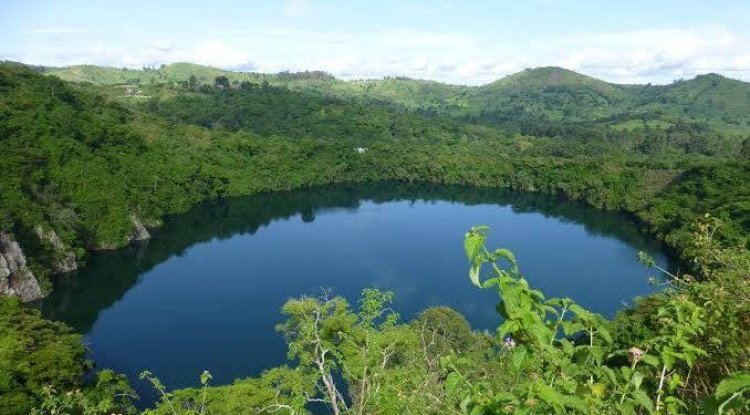Golden Monkey
The Virunga Mountains in Central Africa are home to the golden monkey, an extinct member of the Old-World monkey family. Only in Uganda's Mgahinga National Park, which shares a tri-border with Rwanda and the Democratic Republic of the Congo, is it visible.

The golden monkey (Cercopithecus kandti), an Old World monkey species, is located in four national parks in Central Africa's Virunga volcanic mountains, including Mgahinga in southwest Uganda.
The blue monkey (Cercopithecus mitis), of which this species was formerly believed to be a subspecies and which resembles it in general, has a golden-orange patch on its upper flanks and back.
The behaviour of the golden monkey is not well understood. It dwells in social communities of up to 30 people. Its primary food sources are bamboo, leaves, and fruit, though it is also suspected that it consumes insects.
It is thought that there are between 2000 and 4,000 golden monkeys. It is classified as endangered and is on the IUCN Red List of Threatened Species.
Behaviour of golden monkeys
Males typically stay with the group briefly before departing, whereas females are always present to protect the territory. Since they are arboreal and nocturnal, these monkeys sleep at the tops of bamboo trees. When they are sleeping, golden monkeys form smaller groups of four or more.
The golden monkey has been observed in groups ranging in size from three monkeys in a small group to 62 monkeys in a large group. At higher altitudes, the groups have a tendency to be smaller. After a day of feeding, the golden monkey frequently goes back to one of several distinct sleeping places. The monkeys frequently snooze at the tops of bamboo plants in compact groupings of four. To create a sturdy platform for sleeping, they frequently employ a dense bamboo plant or a collection of bamboo plants that weave together. The sleeping spot is also a frequent feeding spot for the golden monkey, who frequents it every day.
golden monkey's Diet
Young bamboo leaves, fruits, bamboo branchlets, bamboo shoots, invertebrates, flowers, and shrubs make up the majority of the golden monkey's diet. The golden monkey, however, is an opportunistic feeder, and the availability of fruit can readily affect its diet. The golden monkey prefers to eat more fruit in the seasons when it is ripe. When they are available, the golden monkey may also eat a variety of flowers and bushes. The invertebrate that is eaten most frequently is a lepidopterous larva's pupa, which is taken from a leaf. Due to its year-round availability, bamboo is typically the food that is consumed the most.
Where to see the golden monkey in Uganda
Only in Mgahinga National Park's volcanic mountain slopes can one get a close-up look at a golden monkey in its natural environment. At the furthest point of Uganda's southwest border, Mgahinga guards the Ugandan side of the Virunga Mountains.
According to the Uganda Wildlife Authority, foreigners pay USD 60, foreign residents pay USD 50, and Ugandans pay UGX 40K for the golden monkey permit. However, that just covers the guided ranger trekking and conservation expenses, allowing visitors to spend an hour with the golden monkey family. It does not include park entrance fees of $40/$30/20K per person.
The Golden Monkey Habituation Experience, which allows visitors to spend 4 hours with the monkeys and costs US $100 for foreign visitors and UGX 100,000 for EAC locals, is offered by the park and has a semi-habituated troop.
The UWA office or a certified tour operator, who may also arrange your full trip, are the places where you can purchase the tracking permit for golden monkeys.
What's Your Reaction?
 Like
0
Like
0
 Dislike
0
Dislike
0
 Love
0
Love
0
 Funny
0
Funny
0
 Angry
0
Angry
0
 Sad
0
Sad
0
 Wow
0
Wow
0













































































